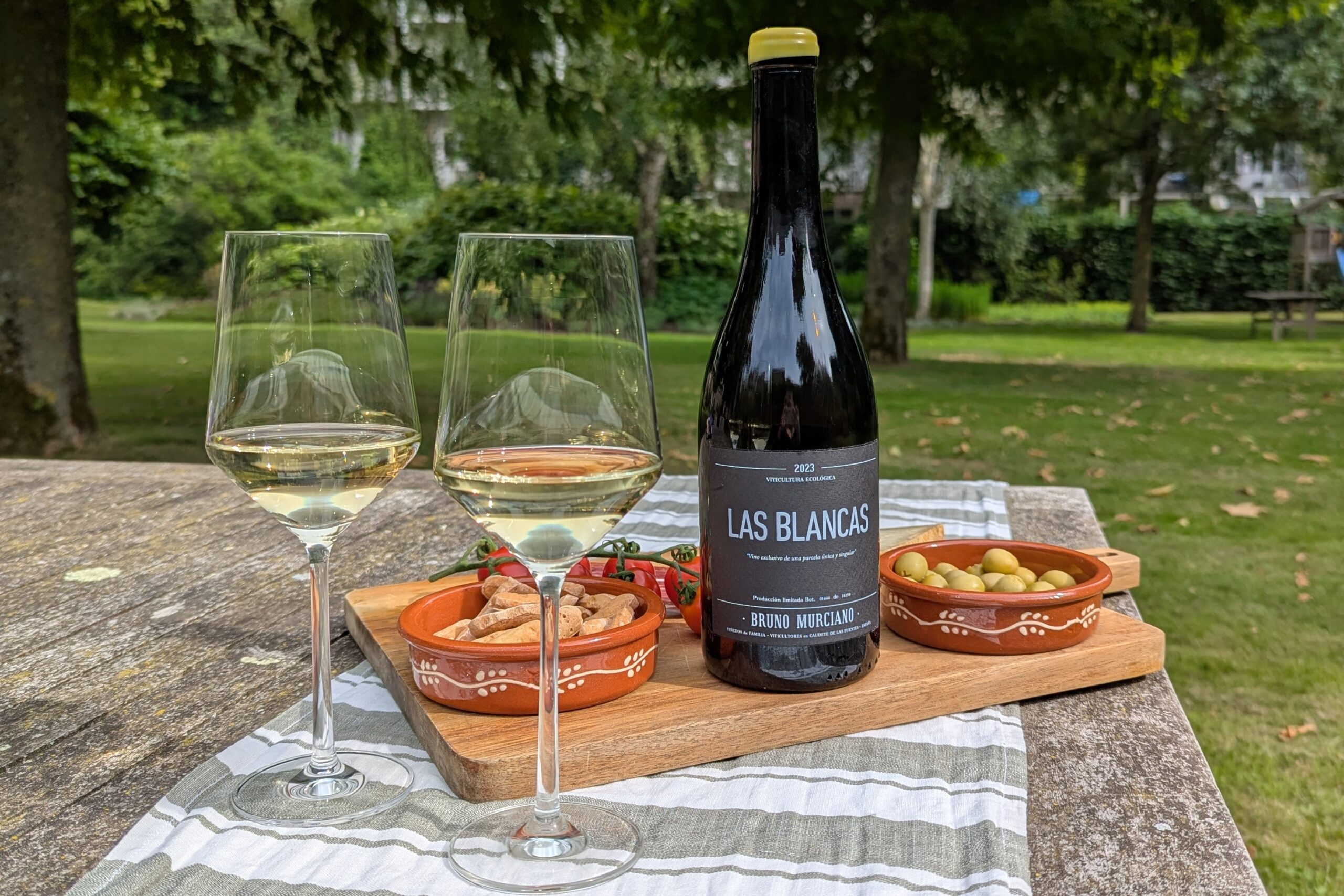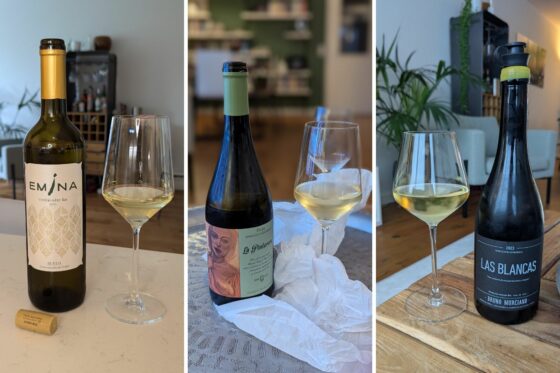Wine Watch: Spanish whites for vakantiegangers
Vicky Hampton
It’s that time of year when every email seems to invoke the inevitable out-of-office reply and it feels like the world and their significant other is op vakantie. So, for the next three months, our resident wine expert, Vicky Hampton, will be taking us on wine-fuelled journey through southern Europe to three top holiday destinations for Dutch travellers. First stop: Spain!
Of course, Spain is a vast country that’s far from homogenous: its landscapes and climates are hugely diverse – and that diversity is reflected in its wines. Spanish wine drinkers can enjoy everything from a fresh, green Albariño from Galicia to a powerful, muscle-car red from Rioja, and much more in between.
In this month’s Wine Watch column, however, I’m focusing on a couple of criteria. Firstly, I’m only featuring white wines, as they’re far more popular than reds during the summer months. And secondly, I’m aiming for a sweet spot between the very well-known, widely exported Spanish wines and the obscure bottles that are hard to find outside of Spain.
That way, if you’re setting off for Spain this summer, this article might give you some pointers on wine regions or grapes to look out for. And if you’ve just returned, it might inspire you to track down some of the wines you enjoyed while abroad. On that note, let’s dive straight into this month’s picks!
All featured wines are available here in the Netherlands from supermarkets, off-licence chains, local wine shops and online stores.
Best budget bottle: Emina Verdejo, Rueda 2023 (€8.50)
“World Verdejo Day” in mid-June meant I learned a little more about this Spanish grape and its homeland, Rueda. Did you know that the Netherlands is the number-one export market for Rueda wines? Apparently, we drink around five million bottles per year! And with good reason: Verdejo is generally refreshing, delicious and affordable.
Without wanting to get too geeky, the Rueda region lies on the high plains south of the River Duero, with vineyards rising to between 700 and 870 metres above sea level. That altitude creates a wide difference between daytime and nighttime temperatures, allowing grapes to retain acidity in an otherwise pretty hot part of Spain. It helps that the Verdejo grape ripens late, which delays the accumulation of sugar from all that Spanish sunshine.
Science lesson over, the result is crisp, citrusy whites that scream summer (and tapas). And that’s exactly what you’re getting with this month’s budget bottle, available from Wijn aan je Deur: high-acidity lemon and grapefruit meet green notes of grass and fennel, rounded out by the fact that the wine is made sobre lías (on its lees – or in contact with the dead yeast cells after fermentation). If you’re a fan of Sancerre, Verdejo from Rueda is a very affordable alternative.

Magnificent mid-range: Domeco de Jarauta “La Pinturera”, Rioja Garnacha Blanca 2021 (€14.95)
When most people think of Rioja, the first thing that springs to mind are Tempranillo-led, oak-aged, full-bodied red wines. And indeed, Rioja Tinto makes up 91% of the region’s production. But the remaining 9% – Rioja Blanco – should not be overlooked.
There are currently nine permitted white grape varieties in Rioja. Some, like Viura and Garnacha Blanca, are fairly neutral in flavour; others, like Malvasía and Sauvignon Blanc, are more aromatic. The Rioja region’s huge surface area (it’s 100 kilometres long) means there’s major diversity in terms of climate, soil and altitude – all of which influence those grapes.
Broadly speaking, white Riojas fall into three approximate styles: oak-aged, long-lasting wines that were historically popular; young, unoaked wines that have found favour more recently; and modern, terroir-driven wines in which oak appears only in the background.
The best way to get to know Rioja Blanco (like any wine!) is to taste a lot of it. But my pick this month is a great place to start, occupying a comfortable middle ground between the three styles. Available from Bilderdijk Wijnhuys in Amsterdam West, La Pinturera is made from 100% Garnacha Blanca and offers beeswax, citrus peel and ripe pear aromas, smoothed out with a creamy texture. Oak is present but not overbearing: more sandalwood than vanilla.
Something special: Bruno Murciano, Las Blancas, Valencia 2023 (€17.99)
Valencia – the sunshine city – may be synonymous with oranges, but the surrounding region is also producing some fantastic wines that seem to be improving every year. Again, it’s all down to finding ways to retain acidity in the grapes: whether it’s planting high-altitude vineyards or taking advantage of ocean breezes.
This particular bottle by Bruno Murciano is a blend of several white grapes, some familiar (Malvasia and Macabeo/Viura) and others highly local (nope, I’d never heard of Marisancho or Merseguera, either).
The vines are around 35 years old, planted at about 900 metres above sea level, ensuring a wine that’s as fresh and mineral as it is mellow and full-bodied. Think ocean-sprayed rocks meeting crushes hazelnuts, and pour with a plate of seafood paella. At under €20 from Grape District (with stores nationwide), Las Blancas offers phenomenal value, too.
For more of Vicky’s wine recommendations and grape explorations, follow @TrufflesandTannins on Instagram or subscribe to The Wine Edit on Substack – she’s even written a guide to Rioja Blanco, if you’d like to learn more!
Thank you for donating to DutchNews.nl.
We could not provide the Dutch News service, and keep it free of charge, without the generous support of our readers. Your donations allow us to report on issues you tell us matter, and provide you with a summary of the most important Dutch news each day.
Make a donation